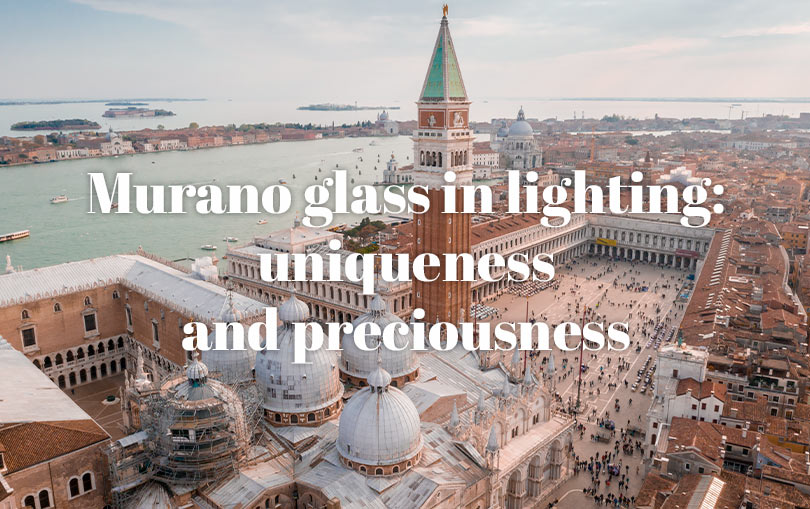MURANO GLASS IN LIGHTING: UNIQUENESS AND PRECIOUSNESS
BLOWN GLASS, CRYSTAL AND GLASS BEADS FOR LUXURY CHANDELIERS THAT INCREASE IN VALUE OVER TIME
Italy is known worldwide for many luxury products and among these, Murano glass certainly takes a place on the podium.
We’ll tell you about the magnificence of Venice and the art of glass through a video that talks about Patrizia Volpato and our Venetian glass lighting fixtures, precious and unique for the quality of the materials and for the craftsmanship according to ancient techniques passed down over the centuries.
Murano glass is an excellence of Made in Italy and one of the products that people most like to collect in the world.
The reasons that have led to the unconditional success of Venetian glass are to be found in the refinement of its processing, in the peculiarity of its related techniques, in the mastery of the Venetian craftsmen, as well as in the quality of the raw materials used and in the brilliance of the colours.
Venetian glass is used to make many objects, jewellery and furnishing accessories, luxury goods and collectibles, including lamps, lighting fixtures and chandeliers of great value and quality, which also acquire value over time due to their preciousness and uniqueness, helping to bring Murano glass all over the world.
Murano glass is one of the most imitated types of glass and has been – and still is – an inspiration over the centuries to numerous artists who visited the lagoon city, including the Americans John Singer Sargent and James McNeill Whistler, who brought its charm back into their paintings, making Venetian glass sought after even overseas.
HOW TO RECOGNISE MURANO GLASS AND VERIFY ITS AUTHENTICITY
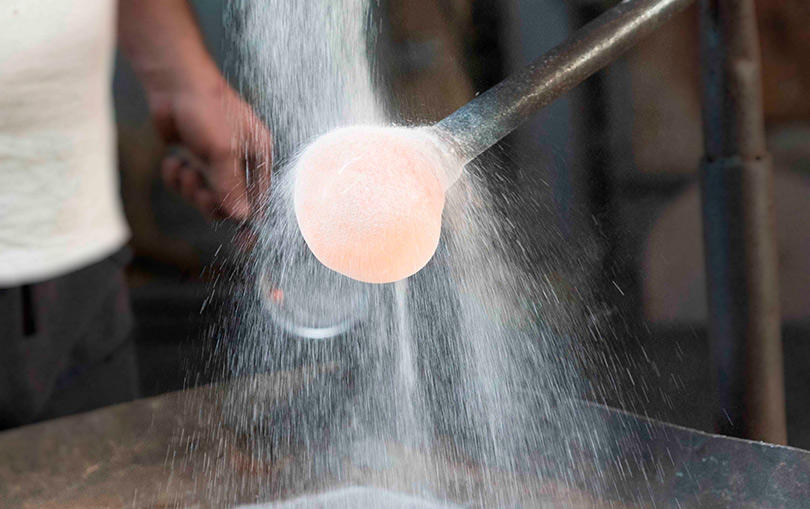
Murano glass, as we have seen in a previous article, is mainly made up of silica, with the addition of other substances to have specific effects, such as opacity, polychromy etc..
The silica powder melts with the high temperatures of the furnaces and, when the mixture becomes soft and malleable, the master glass-makers can give space to their creativity and shape the material, giving life to unique and inimitable elements.
The substances added to the silica therefore give birth to different variants of glass, which differ also in terms of processing technique, but which are all commonly referred to as “Murano glass”.
Knowing the techniques and the different types of processing allows us to distinguish the originality of the object and the authenticity of the glass.
Let’s take a look at the differences between the various types of glass processing used in the Patrizia Volpato collections of lamps and chandeliers:
CRYSTAL
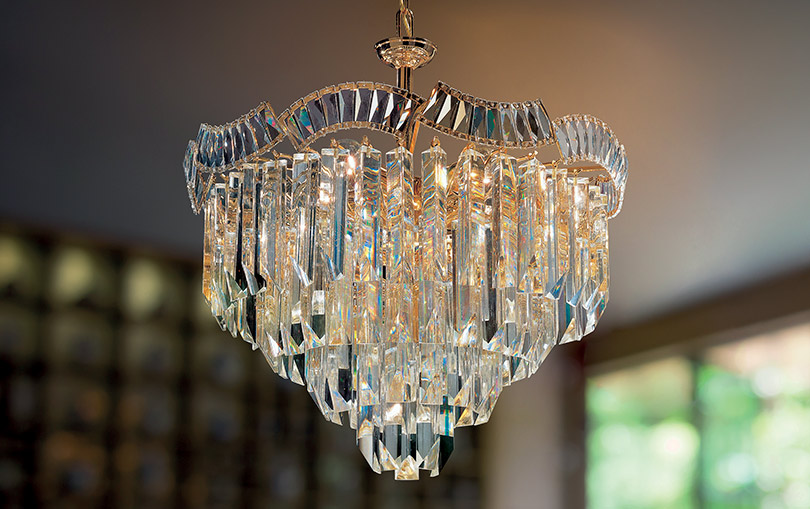
It is also known as crystalline glass and is a clear glass, whose production is achieved through the purification of raw materials by repeated melting and immersion of the molten glass in water. This technique, invented by Angelo Barovier in the 15th century, gives rise to a brilliant glass that refracts light impeccably and can be found in our Cristalli collection, as well as in the Riflessi collection
HAMMERED GLASS
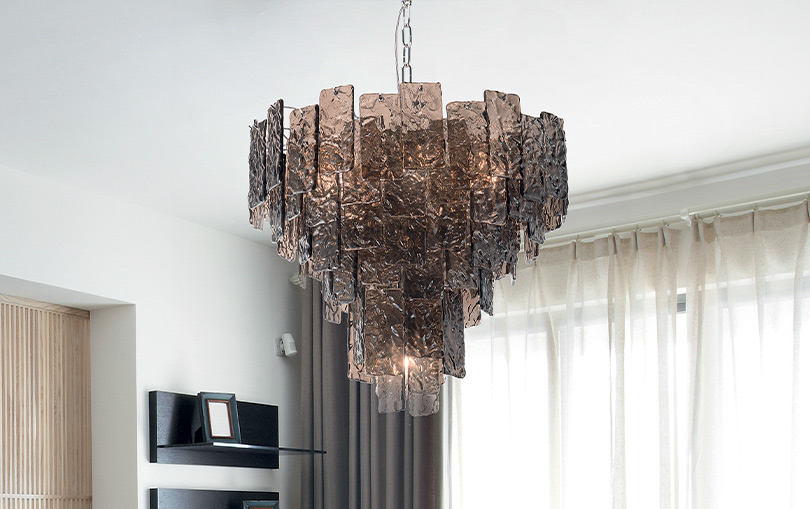
It is a particular type of technique that gives the glass a cracked effect, achieved through repeated processing in a melting furnace. It is a technique widely used during the seventies in the production of lamps and which Patrizia Volpato proposes again in the Glace collection
GOLD LEAF GLASS
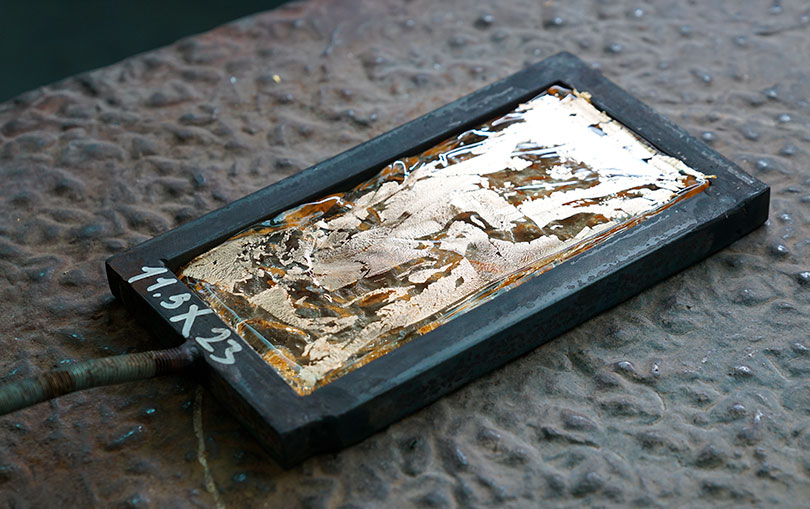
Processing with gold or silver leaf consists in placing a thin metal leaf between two layers of clear glass. This technique is used in the Flow collection and in the Iconica collection for the details of the leaves.
CHALCEDONY GLASS
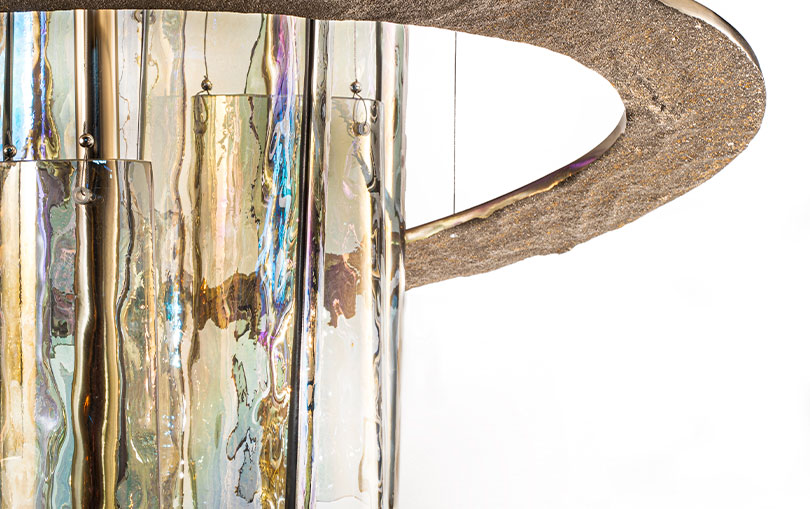
This type of glass has a polychromatic and translucent appearance, as in the Iride collection. To achieve this effect, metals of different colours are melted together in order to create a game of colours in the glass that translates into the appearance of a gemstone.
The art of glass beads, an element of the UNESCO Intangible Cultural Heritage, deserves a separate chapter.
THE ART OF GLASS BEADS AND CONTERIE, UNESCO INTANGIBLE CULTURAL HERITAGE
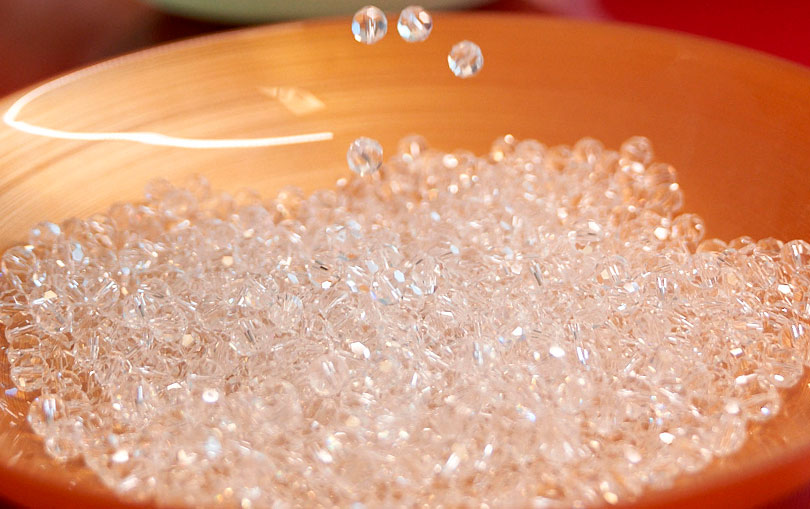
Murano beads are products handcrafted by lampwork, this art is closely linked to the knowledge and mastery of processing techniques. It is an ancient art that requires great skill, which recalls the Venetian tradition and which, for this reason, is registered in the UNESCO Intangible Cultural Heritage.
Venetian glass beads are so precious that they have been used over the centuries as a real currency of trade with the Americas, India and Africa.
Each bead is processed and decorated individually, and it was the Venetian bead makers who transformed the production of these artifacts into an art.
There are different types of glass beads used for different purposes, but it is with the “conteria” beads that opulent weaving and embroidery releasing light were created and it is the same light of the very elegant glass fringes that characterise one of the most precious proposals of Patrizia Volpato lighting fixtures, the Venezia collection .
The term “conteria” literally means to trim, to adorn glass objects and ornaments. Originally, this term meant any type of glass bead but, starting from 1900, the term began to be used exclusively with reference to beads achieved by cutting a perforated rod (lampworking). These tiny millimetre-sized cylinders are curved in the heat of the furnace and are threaded by hand into tiny metal wires to create necklaces, small evening bags, fabrics and fringes.
Each chandelier, lamp or wall light in the Venezia collection is made up of fringes entirely hand-sewn by the traditional “impiraresse” – the term by which Venetian bead threaders are called.
The beaded fringes of the Venezia collection are composed of Murano glass microspheres and of the purest crystal rods and multifaceted crystal spheres so as to create an effect of delicate refinement that brings us back to the tradition and history of Venice with modern elegance.
Craftsmanship, raw materials and mastery of execution make Murano glass an excellence of Made in Italy and the uniqueness of each single object and element is one of the peculiarities that makes Venetian glass so precious, inimitable and always unique.
Discover the New Forms of Light in crystal and Murano glass from the Patrizia Volpato collections!


